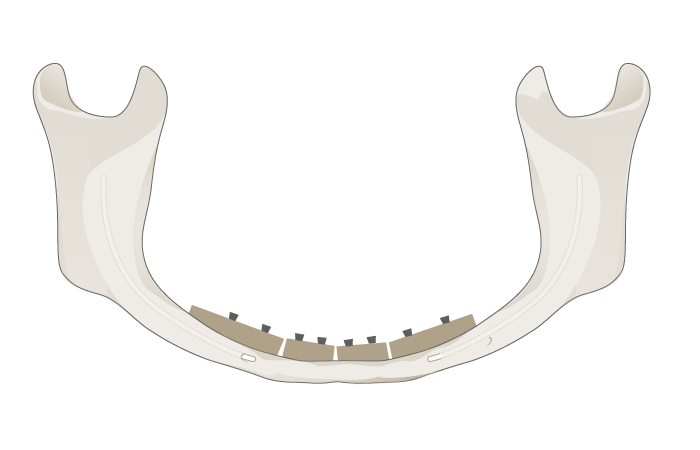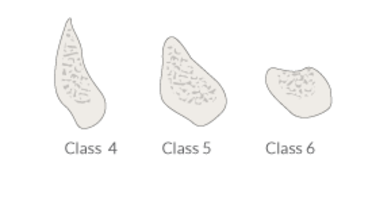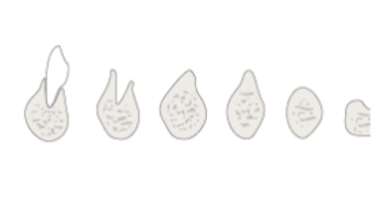-
0
Patient Assessment
- 0.1 Patient demand
- 0.2 Overarching considerations
- 0.3 Local history
- 0.4 Anatomical location
- 0.5 General patient history
-
0.6
Risk assessment & special high risk categories
- 5.1 Risk assessment & special high risk categories
- 5.2 age
- 5.3 Compliance
- 5.4 Smoking
- 5.5 Drug abuse
- 5.6 Recreational drugs and alcohol abuse
- 5.7 Parafunctions
- 5.8 Diabetes
- 5.9 Osteoporosis
- 5.10 Coagulation disorders and anticoagulant therapy
- 5.11 Steroids
- 5.12 Bisphosphonates
- 5.13 BRONJ / ARONJ
- 5.14 Radiotherapy
- 5.15 Risk factors
-
1
Diagnostics
-
1.1
Clinical Assessment
- 0.1 Lip line
- 0.2 Mouth opening
- 0.3 Vertical dimension
- 0.4 Maxillo-mandibular relationship
- 0.5 TMD
- 0.6 Existing prosthesis
- 0.7 Muco-gingival junction
- 0.8 Hyposalivation and Xerostomia
- 1.2 Clinical findings
-
1.3
Clinical diagnostic assessments
- 2.1 Microbiology
- 2.2 Salivary output
-
1.4
Diagnostic imaging
- 3.1 Imaging overview
- 3.2 Intraoral radiographs
- 3.3 Panoramic
- 3.4 CBCT
- 3.5 CT
- 1.5 Diagnostic prosthodontic guides
-
1.1
Clinical Assessment
-
2
Treatment Options
- 2.1 Mucosally-supported
-
2.2
Implant-retained/supported, general
- 1.1 Prosthodontic options overview
- 1.2 Number of implants maxilla and mandible
- 1.3 Time to function
- 1.4 Submerged or non-submerged
- 1.5 Soft tissue management
- 1.6 Hard tissue management, mandible
- 1.7 Hard tissue management, maxilla
- 1.8 Need for grafting
- 1.9 Healed vs fresh extraction socket
- 1.10 Digital treatment planning protocols
- 2.3 Implant prosthetics - removable
-
2.4
Implant prosthetics - fixed
- 2.5 Comprehensive treatment concepts
-
3
Treatment Procedures
-
3.1
Surgical
-
3.2
Removable prosthetics
-
3.3
Fixed prosthetics
-
3.1
Surgical
- 4 Aftercare
移植(下颌)
Key points
- 在萎缩性下颌无牙颌中,如果现存骨高度不足 5-6 mm,宽度不足 6 mm,则植入种植体时需要进行骨增量程序
- 移植时使用自体骨块
- 增量区域必须实现无张力软组织覆盖,以便确保伤口充分愈合且骨移植充分结合
- 移植后,必须考虑软组织和硬组织的变化,并且通常宜进行软组织改善,即前庭成形术
适应证
在缺齿下颌中,由于骨吸收过程以及由此造成的表面牙槽神经走势,可能会导致种植体植入受限。在前牙区,如果高度不足 5-6 mm,宽度不足 6 mm,则在种植体植入前需要进行骨移植。在后牙区,如果沿牙槽神经分布的残留骨不足 2-3 mm,则需要进行增量过程,但仅限考虑种植体的情况。
材料和方法
自体骨块移植(图 1)是一种具有充分的形态稳定性、骨诱导性和骨生成性的治疗方案。要获取较大的单皮质移植块,合适的供体部位是前髂嵴或后髂嵴。在骨移植后,必须实现无张力软组织适应和闭合,以便保证移植结合,避免伤口裂开和感染。这会造成前庭较浅,因此在种植体暴露的背景下,通常宜实施软组织改善,即前庭成形术。
在此适应证下,如果采用除自体移植块之外的其他骨增量替代品,结果将不可预测,而且,由于它们缺乏机械特性和生物活性,因此不建议使用。特别是缺乏形态稳定性的颗粒骨替代品,尤其不适合用于三维骨增量。考虑到萎缩性缺齿下颌的形态缺损(缺乏空间的临界骨缺损),建议采用稳定的骨移植。如果是只具有骨诱导性的骨块替代品,则在弥补这些缺损方面的再生潜能无法令人满意。

备选方案
对于前后萎缩性下颌无牙颌中的种植体植入,如果残留骨足够,则可将短种植体(即 6 mm 以下)作为备选。必须始终考虑后段中的牙槽神经分布。
斜角式颏孔间种植体是可以将负重分布到后面的附加方案,而且可以避免增量程序。



